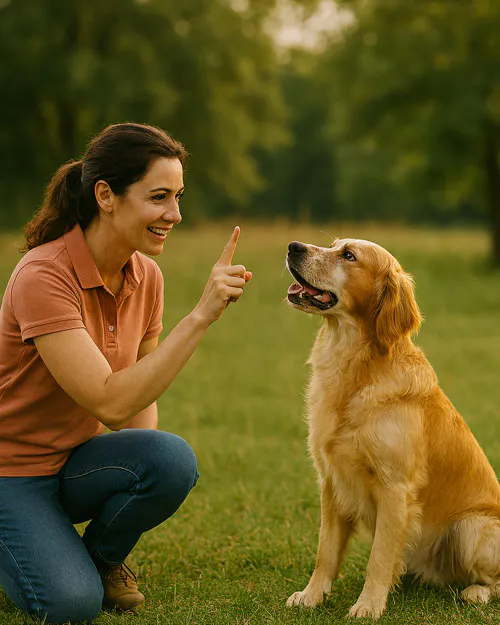
Every dog needs to know where it is welcome and where it is not. Teaching boundaries is not about punishment or harsh rules but about giving your dog clear guidance.
A dog that understands limits is calmer, safer and easier to live with. Whether you want to keep your dog out of the kitchen, away from the front door or off the flowerbeds, boundary training is a skill that benefits both dog and owner.
How to do it
The first step is to decide which areas are off‑limits. Be consistent. If the sofa is sometimes allowed and sometimes not, your dog will never be sure of the rule. Dogs thrive on clarity, so choose the spaces that matter most to you and stick with them. It is easier to relax the rules later than to tighten them once habits have formed.Start with one boundary at a time. If you want your dog to stay out of the kitchen, use a clear marker such as the doorway. Stand with your dog on the safe side and reward it for staying there. You can use a treat, a toy or simple praise. The key is to make the correct choice rewarding. If the dog tries to cross, calmly block the way and guide it back. Do not shout or push. The dog will learn far quicker from quiet repetition than from anger or frustration.
Timing is important. Dogs learn by linking action and outcome. If your dog pauses at the line and you reward instantly, it will understand that staying put is the right decision. If you wait too long, the connection is lost. Keep sessions short and positive. A few minutes several times a day is more effective than one long drill.
As your dog improves, add distractions. Step into the kitchen yourself, rattle a pan or open the fridge. If the dog holds its position, reward generously. If it breaks the boundary, calmly reset and try again. This teaches that the rule applies even when tempting things happen beyond the line. Over time, your dog will learn that the invisible barrier is always there.
Boundaries are not only for indoors. Many owners want their dogs to stay within the garden without bolting through the gate. The same principles apply. Choose a clear marker such as a path edge or fence line. Walk your dog on a lead along the boundary, rewarding it for staying inside. Gradually increase freedom while keeping a close eye. Consistency builds trust, so if you allow one 'escape', the lesson is weakened.
Children can be part of the process too. If your dog is child‑friendly, involve the children in rewarding the dog for staying behind a line or waiting at a door. This not only reinforces the training but also teaches children how to interact responsibly. And, as a bonus, a dog that respects boundaries is much safer around children because it learns to pause and wait rather than rush forward.
Some dogs test limits more than others. Young, energetic breeds may push harder, while older dogs may settle quickly. Patience is essential. Remember that boundary training is not about dominance but about communication – you're showing your dog how to succeed. Every time it makes the right choice, the bond between you grows stronger.
There will be setbacks. A visitor may encourage the dog into the kitchen or a child may forget to close the gate. Don't treat these as failures, though – simply reset and continue. Dogs learn through repetition, and occasional mistakes are part of the process. What matters is that the rule is clear and consistently reinforced by you and your family. Over weeks and months, boundaries become second nature.
Boundary training is one of the most practical lessons you can teach. It requires no special equipment, only patience and consistency. The reward is a dog that understands its place in the household and feels secure within clear limits... and it's better for you, too!
